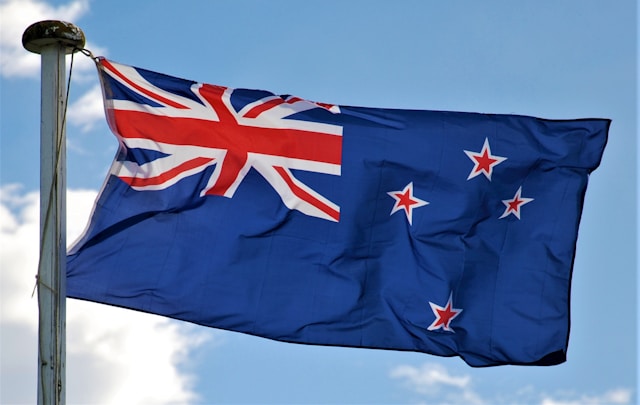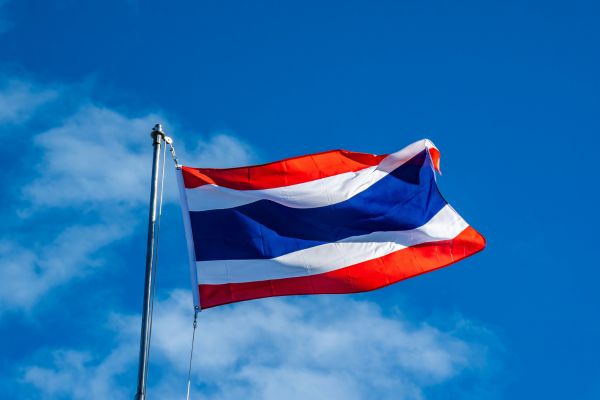
The year 2013 can be seen as a turning point in the history of the recognition and enforcement of foreign judgments in China.[1] In September/October 2013, President Xi Jinping announced one of the biggest investment projects in history. Only one month later, the first foreign judgment ever to be recognized by a Chinese court in the absence of an applicable treaty was reported (Wuhan Intermediate People’s Court (IPC) judgment of 2013.11.26 recognizing of a German insolvency judgment). This may be a simple coincidence; but it is a telling one. Since then, successful foreign judgments enforcement cases continue to be reported. In 2016, the Nanjing IPC accepted the enforcement of a Singaporean judgment in the very famous and much commented Kolmar case (Nanjing IPC judgment of 2016.12.9). In 2017, the Wuhan IPC recognized a Californian state court judgment (Wuhan IPC judgment of 2017.06.30). This trend is confirmed with two recent decisions of the Shanghai IPC (accepting the enforcement of an American federal court judgment rendered by the US District Court for the Northern District of Illinois in its judgment of 2018.09.12)[2] and the Qingdao IPC (accepting the enforcement of a Korean judgment in its judgment of 2019.03.25).[3]
China Justice Observer has been one of the forums where information on the enforcement practice in China is not only made available but also discussed and commented from a Chinese perspective. Administrators of this blog, including my friend Meng Yu, have been particularly keen to provide those who are not much familiar with the Chinese legal system with very much valuable information on the general context and the background of these developments.
This modest contribution aims at analyzing the impact of these developments on the Sino-Japanese mutual recognition relationship. This relationship is characterized by mutual refusal in both countries to recognize each other’s judgments. It is hoped that this contribution helps to enhance the mutual understanding in both countries so that this unwanted vicious circle be finally broken.
Two remarks should be made from the outset. First, only cases concerning the recognition of foreign judgments rendered in jurisdictions with which China has not concluded any convention on the recognition and enforcement of foreign judgments will be addressed here. The question of the recognition of judgments rendered in jurisdictions having concluded judgments convention with China is excluded.[4] Second, the discussion here is limited to the recognition and enforcement of judgments rendered in civil and commercial matters to the exclusion of foreign family judgments such as divorce.
In this note, I argue that the above-mentioned promising developments under Chinese law are unfortunately not sufficient to normalize the Sino-Japanese reciprocal judgments relationship. This is due, first, to the very specific context of this relationship (I). This is also due to the fact that the doors of recognition in China are likely to remain shut to judgments not only rendered in Japan, but also the overwhelming majority of the States (II).
I. Origin of the Problem and Later Developments:
The Sino-Japanese recognition dilemma has been much reported and discussed by observers and scholars.[5] What needs to be highlighted here is the different recognition approaches in both countries. This difference explains the current stalemate situation of reciprocal refusal of recognition and enforcement judgments in each side.
1. Chinese Perspective[6]
Although 2013 can be regarded as an epoch-making year for the history of the recognition and enforcement of foreign judgments in China, the situation was different before. Prior to 2013, in the absence of an international treaty, the recognition and enforcement of foreign judgments was possible only in theory. The current provisions of the Chinese Code of Civil Procedure and their older versions distinguish between two grounds on the basis of which foreign judgments could be recognized in China: (1) the existence of international treaty or (2) reciprocity. The Supreme Court of China itself considered that in examining the application for the enforcement of foreign judgments, a Chinese court, should first of all “examine the existence of any international agreement or the existence of factual reciprocal relationship between China and the foreign country of which the court rendered the judgment” and that “[o]nly when the court has determined the existence of such international agreement or factual reciprocity, may it proceed to the examination of the other requirements […]. (emphasis added).[7]
However, the reality of courts’ practice was different. In fact, there was a kind of amalgamation between the absence of an international treaty and the proof of reciprocity. Indeed, Chinese courts have regularly concluded to the absence of reciprocity just after indicating the absence of an international treaty between China and the rendering state without examining in concreto whether reciprocity could be established or not.
Some Chinese scholars then explained, on the basis of the so-called “de facto reciprocity” theory; that is the party seeking enforcement needs to ascertain that there are precedents of the enforcement of Chinese judgments in the rendering State so that Chinese courts would be ready to admit the existence of reciprocity with that State. However, until 2013, there had been no court decision to support this theory. On the contrary, in 2011, the Shenzhen IPC refused to recognize a Korean judgment although the judgment creditor submitted evidence of the recognition of a Chinese judgment in Korea.
Thus, in practice, the absence of treaty had (almost[8]) automatically led to declare reciprocity not established, and consequently to the refusal of the foreign judgment’s recognition and enforcement. It is then without surprise to learn that prior to 2013, there had been no single case law report of a successful foreign judgment recognition or enforcement claim on the basis of reciprocity in the absence of an applicable international treaty. Even judgments rendered in jurisdictions where reciprocity is not even a requirement for judgment recognition were refused recognition in China based on the logic explained above (the United Kingdom, Australia, etc.).
2. Japanese perspective[9]
Under Japanese law, foreign judgments can be recognized in Japan if they satisfy, inter alia, the reciprocity requirement. In 1983, the Japanese Supreme Court clarified the test upon which reciprocity should be examined.[10] In this case, it is made clear that reciprocity would be established if it is shown that Japanese judgments of the same kind are likely to be recognized by the courts of the rendering State under conditions that are not substantially different from the ones admitted in Japan. The decision marked a shift from the old restrictive “the same-or-more-lenient requirements” test to the more lenient “not-substantially different” test. The new test was confirmed later by the Supreme Court itself in its landmark decision of 1998[11] and has been generally followed by lower courts.
Some court decisions even showed the readiness of Japanese courts to overcome eventual blockade that can result from a strict application of the reciprocity requirement. For example, the Nagoya District Court found in one case decided in 1987 that reciprocity was guaranteed with the then West Germany on the ground that it was “highly probable” that judgments rendered in Japan would be recognized in Germany. The court so decided irrespective of the then predominant view of German scholars denying reciprocity with Japan.[12]
It can be then concluded that, for Japanese courts, the establishment of reciprocity depends on the proof of the likelihood that Japanese judgments would be recognized in the rendering state under conditions that are not substantially different from the ones admitted in Japan. It is therefore without surprise to learn that, since 1983 (i.e. 37 years), and apart from the Chinese exception, all challenges to block the recognition or enforcement of foreign judgments on the ground of lack of reciprocity have not been successful and that reciprocity was declared established even with regard States where reciprocity is a requirement for judgments recognition and enforcement including South Korea, Germany, and Mexico.
3. The Sino-Japanese Recognition Dilemma
The difference of approaches in China and Japan is obvious: on the one hand, reciprocity is regularly not established (usually after pointing out the absence of a treaty (Chinese approach)). On the other hand, reciprocity is established as long as the likelihood of the recognition of local courts in the rendering State is proved (Japanese approach).
As correctly indicated by Chinese scholars and experts themselves,[13] the starting point of the deadlock situation between China and Japan is the decision of the Chinese courts to refuse to recognize a Japanese judgment in a case involving Japanese parties in 1995. Chinese courts reached this outcome after the Dalian IPC referred the case to the Chinese Supreme People’s Court (SPC) for guidance. The Supreme Court ruled that in the absence of applicable treaty or established reciprocity, Japanese judgments could not be enforced in China. Interestingly, the Court failed to state the ground upon which it reached its decision especially with regard to reciprocity. Following the Supreme Court’s opinion, the Chinese court before which enforcement was sought declared that the Japanese judgment could not be enforced on the basis of the same ground.
A couple of years later, the issue of reciprocity with China was brought before Japanese courts. It is important to point out here that first reciprocity was declared established with China by the Osaka District Court in its judgments of 15 July 2002 in application of the “not-substantially different” test explained above. However, on appeal, this decision was overruled and in 2003 the Osaka High Court refused the recognition of a Chinese judgment for lack of reciprocity. However, the Osaka High Court reached its decision after examining the Chinese precedents and the absence of any evidence (other precedents or authoritative interpretations) in favor of the recognition of Japanese judgments in China.[14]
In 2004, the Beijing IPC No. 2 in its judgment of 2004.12.20 declared that the evidentiary force of a Japanese judgment — which is normally not subject to the rule of recognition and enforcement of foreign judgments (REFJ) — could not be accepted because there was no treaty concluded between China and Japan and that reciprocity had not been established. Here again, there were no concrete analyses of the existence or not of reciprocity and the court contented itself with this general and groundless affirmation to deny the taking into consideration of the Japanese judgment.
This attitude can be contrasted with the approach of Japanese courts when the enforcement of a Chinese defamation default judgment was sought in Japan in 2015. Both the Tokyo District Court and the Tokyo High Court found that the Chinese judgment could not be enforced for lack of reciprocity,[15] but only after having examined the overall recognition practice in China, including the reception of Japanese judgments. As indicated in the ruling of the courts, the judgment creditor was invited to provide evidence of any foreign judgment being recognized in China on the basis of reciprocity, but the judgment creditor failed to do so.[16] Thus, both courts reached the same conclusion: at present, Japanese judgments are unlikely to be recognized in China under conditions that are not substantially different from the Japanese ones.
4. The Shift in the Recognition Practice of Chinese Court: Departure from the Groundless Non-Recognition Practice?[17]
It is important to recall again that the year 2013 witnessed a shift in the recognition practice of Chinese courts with the first-ever decision accepting the recognition of a foreign judgment on the basis of reciprocity in the absence of an applicable treaty.[18] As mentioned above, this unprecedented judgment – which did not draw too much attention – was later followed by four other decisions, the last one being reported is the recognition of a Korean judgment in March 2019.[19]
This change of attitude did not come from nothing. A number of posts in the China Justice Observer[20] provide us with very insightful information. According to the administrators of the Blog, this change of attitude of the Chinese Court corresponds with a general change of policy of the Chinese government after the announcement made by President Xi Jinping to revive the Silk Road through the so-called “One Belt One Road” initiative. In March 2015, the Government clarified the aims of this initiative in a document entitled “Visions and Actions on Jointly Building Silk Road Economic Belt and 21st Century Marine Silk Road”.[21] In June 2015, the Chinese Supreme Court issued “several opinions” “on providing judicial services and safeguards for the construction of the “Belt and Road” by People’s Courts” in which the “need to broaden the scope of international judicial assistance” was emphasized. In this regard, it was pointed out that such aim would be attained on the basis of “the commitments of the requesting state to grant reciprocity” which would lead to “promoting the formation of a reciprocal relationship” especially when “Chinese courts […] grant reciprocity first” (emphasis added).
These developments were later followed by some practical steps taken by Chinese courts to promote the recognition and enforcement of foreign judgments. In June 2017, the “Nanning Statement” was approved at the 2nd China-ASEAN Justice Forum held in Nanning, China.[22] Article 7 largely reveals the new rationale behind the new recognition policy adopted by Chinese courts. According to the said Article, “regional cross-border transactions and investments require a judicial safeguard based on appropriate mutual recognition and enforcement of judicial judgments among countries in the region. […]. If two countries have not been bound by any international treaty on mutual recognition and enforcement of foreign civil or commercial judgments, both countries may, subject to their domestic laws, presume the existence of their reciprocal relationship […]” (Emphasis added).
Finally, it was also reported that the Chinese Supreme Court has been working on the preparation of a new Draft on “the Judicial Interpretation of the Recognition and Enforcement of Foreign judgments”. One of the provisions[23] essentially deals with the examination of the existence of reciprocity. According to this provision, “[w]here a party is applying for the recognition and enforcement of a foreign judgment in civil and commercial matters, and there is neither bilateral treaty nor international conventions between the foreign country and China, however, if any of the following circumstances is present, the Chinese court may, in accordance with the principle of reciprocity, recognize the foreign judgment:
(A) The foreign country has a precedent for the recognition of a Chinese judgment;
(B) According to the law of the country where the judgment is rendered, a Chinese judgment may, under the same circumstances, be recognized and enforced by the foreign court;
(C) On the basis of the consensus on judicial assistance between China and the foreign country, the principle of reciprocity may be applied. […]”
These developments among others show the efforts Chinese courts led by the Supreme Court to substantially change the recognition practice in China. These efforts have been so far successful with the appearance of the first reports of successful recognition cases in China as indicated above.
II. Prospect of the Impact of the Recent Chinese Developments on the Sino-Japanese Reciprocal Judgments Recognition
As mentioned above, Japanese courts have been quite liberal in assessing the fulfillment of the reciprocity requirement. For Japanese courts, the reason why Chinese courts’ judgments cannot be recognized in Japan lies in the fact that Japanese judgments are very much unlikely to be recognized in China because (1) the existence of the Chinese precedents based on the Chinese Supreme Court response of 1994 which specifically denied the existence of reciprocity with Japan; and (2) the overall recognition practice in China shows that foreign judgments had been systematically refused recognition in China in the absence of a treaty.
The question to be answered is the following: Will the recognition policy shift of the Chinese courts have any impact on the Sino-Japanese reciprocal recognition practice? If the answer is yes, then “how can China and Japan resolve the stalemate?”
1. Will the recognition policy shift of the Chinese courts have any impact on the Sino-Japanese reciprocal recognition practice?
As regards the first question, and unlike a number of scholars and observers from China and Japan, a realistic analysis of the situation shows that the recent developments described above are unfortunately not sufficient to provoke a break of the vicious circle chain. Indeed, it is true that there are more and more reports on successful recognition cases before Chinese courts as a consequence of the shift in the recognition policy in China. However, closer analyses of these cases and the general context of foreign judgments recognition in China shows that
(i) only a tiny breach of the Chinese reciprocity wall was opened allowing for the recognition of specific judgments rendered in a specific jurisdiction, and
(ii) in any case, Japanese judgments are not concerned by these developments as they cannot be included in the list of the potential beneficiaries of these developments.
i) The Chinese Reciprocity Wall of Non-Recognition is Still Standing
With regard to (i), it is true that Chinese courts have moved from an attitude outright refusal to establish reciprocity to an attitude under which reciprocity serves as a ground for judgment recognition. However, in all the decisions where the foreign court judgment was recognized, it was not because of the likelihood of the recognition of Chinese judgment in the rendering state (what Chinese scholars call “presumptive reciprocity”). In fact, it was because the judgment creditors were successful to prove before Chinese courts that the existence of an enforcement precedent in the rendering state of Chinese judgments (the so-called de facto reciprocity).
This approach certainly would allow the enforcement in China of judgments rendered in States where Chinese judgments have been enforced first. However, an approach based on de facto reciprocity is problematic when such a precedent is not existing. Indeed, if the judgment creditor fails to bring the proof of the existence of such a judgment, simply because there has been no Chinese judgment recognition case brought before the courts of the rendering state, he/she can cry his/her bad lack. In such a situation (i.e. lack of actual recognition case of a Chinese judgment), all efforts to show that Chinese judgments are very much likely to be enforced in the rendering state (either thanks to the liberal recognition attitude adopted in that jurisdiction or because reciprocity is not even required for judgments recognition) would doom to failure.
There is no surprise then to learn that foreign judgments continued to be refused recognition in China even under this new approach simply because no precedent existed; or because Chinese courts were not aware of the existence of such precedents. For example, in 2015, the Ningde IPC refused to recognize a Malaysian judgment (decision of 2015.03.10). This was the case although reciprocity was[LXZ4] not a requirement and foreign judgments were recognizable on the basis of common law principle and despite the fact that Malaysia was part of OBOR initiative. The same year, the Xiangtang IPC refused the recognition of a Chadian judgment (decision of 2015.04.22).
The refusal cases concern also judgments rendered in jurisdictions where Chinese judgments were effectively recognized. This is the case of the Shenyang IPC decision of 2015.04.08 refusing to recognize a Korean judgment which makes it the second refusal case of Korean judgments in addition to the 2011 case mentioned above. Similarly, the Nanchang IPC decision of 2017.04.20 refused to recognize an American judgment from Pennsylvania although reciprocity is not a requirement and foreign judgments are recognizable on the basis of common law principle and the existence of a Chinese judgment recognition case in the US. Finally, the Fuzhou IPC decision of 2017.06.06 refused the enforcement of an Israeli judgment despite the existence of a precedent in Israel establishing reciprocity with China.[25]
Interestingly, in all these cases, the non-recognition was based on the old approach regardless of whether Chinese judgments were likely to be enforced in the rendering state (Malaysia and Chad) or the fact that Chinese judgments were actually recognized (Korea, USA, and Israel).
Two conclusions can be drawn from these cases, which are essential to the analyses here:
First, the increasing number of successful recognition cases shows that the recognition based on de facto reciprocity is becoming an established practice in China.
Second, the existence of refusal cases of judgments emanating from reciprocating countries (Korea, USA, and Israel) can be explained by the fact that the recognition practice in China is in a transitional phase. The subsequent successful recognition cases of American and Korean judgments can comfort this idea.
However, one cannot help thinking that by adopting de facto reciprocity, in fact, Chinese courts have not broken with the old systematic non-recognition approach. They simply allow, under certain conditions (proof of de facto reciprocity) the recognition of a limited number of judgments, whereas, for the overwhelming majority of cases, the old systematic non-recognition approach will continue to apply. In other words, only judgments emanating from two categories of jurisdictions can be recognized in China.
The first concerns judgments emanating from jurisdictions with which China concluded international treaties dealing with the question of foreign judgments. In this respect, China has so far concluded 33 bilateral treaties covering the issue of the recognition and enforcement of foreign judgments. This means that the recognition of judgments emanating from 33 jurisdictions is as a matter of principle guaranteed.
The second concerns judgments emanating from jurisdictions where Chinese judgments were effectively recognized. These judgments can be recognized on the basis of de facto reciprocity. So far, de facto reciprocity was established only with respect to 4 jurisdictions: Germany, the United States, Singapore and Korea (and potentially Israel regardless of the non-recognition Chinese precedent and other countries such as Australia, New Zealand and Canada).
This means that only judgments emanating from 37 (and potentially 41) out of about 200 jurisdictions are expected to be recognized in China. In other words, only judgments of 18% (and potentially 20%) of the total number of jurisdictions can be recognized in China. For the recognition of judgments emanating from the remaining jurisdictions (82%, and potentially 80%), the old systematic non-recognition approach would continue to apply. This can hardly be regarded as a pro-recognition approach since, under the current Chinese courts’ practice, the Chinese reciprocity wall is expected to continue barring the recognition of judgments emanating from an overwhelming majority of jurisdictions.
This is particularly unfair to judgment creditors who cannot be blamed for the non-existence of precedents of effective recognition of Chinese judgments in those jurisdictions or for not being aware that such judgments do exist but not reported.
In this regard, Meng Yu and Guodong Du inform us that the situation would probably change with the Chinese Supreme Court's consideration of adopting presumptive reciprocity as a ground for recognition in addition to de facto reciprocity. Development in this sense will be certainly welcomed. This would solve the difficulty of the recognition in China of judgments emanating from a great number of jurisdictions across the world. However, if one examines closely the terms based on which some of the reforms proposals have been made, one cannot but continue to be skeptical of the possibility for Japanese judgments to be recognized in China.
ii.The Impact on the Recognition of Japanese Judgments
Although there are indications that the so-called presumptive reciprocity is likely to be adopted in the future, the terms under which this proposal is formulated causes difficulty especially with regard to the recognition of Japanese judgments in China. Indeed, the proposals make it clear that the establishment of the presumptive reciprocity would not be based only on the likelihood or high probability that Chinese judgments would be recognized in the rendering state, but and more importantly, it is subject to a condition of the non-existence of precedence of refusal of Chinese judgments in the rendering State. The second condition would exclude Japanese judgments from taking advantage of the new rule and prevent the break of the non-recognition vicious circle between both countries.
As mentioned earlier, in the 2017 Nanning Statement approved, participating countries were encouraged to “presume the existence” reciprocity. It was also clearly indicated that such presumption is subject to the fact “that the courts of the other country had not refused to recognize or enforce such judgments on the ground of lack of reciprocity.”
Similarly, the new Draft under preparation on “the Judicial Interpretation of the Recognition and Enforcement of Foreign judgments” can also be read in way to suggest that what needs to be considered by Chinese Courts is not the overall practice of the courts of the rendering states, but the existence or not of precedents on the recognition or not of Chinese judgments. Indeed, as mentioned above, Article 18 of the Draft invites Chinese courts to consider in their examination of the principle of reciprocity (a) whether the foreign country has a precedent for the recognition of a Chinese judgment; and (b) whether according to the law of the country where the judgment is rendered, a Chinese judgment may, under the same circumstances, be recognized and enforced by the foreign court.
According to the explanation of Chinese commentators, alternative (b) i.e. presumptive reciprocity would work only if alternative (a) i.e. de facto reciprocity is not applicable. As a result, if the rendering State has a precedent on the non-recognition of Chinese judgments on the basis of lack of reciprocity, the condition of alternative (a) will not be met and as a consequence, alternative (b) cannot come into play. This is because presumed reciprocity would work only if the rendering state has no precedent on the acceptance of recognition of Chinese courts’ judgments.
Unfortunately, due to the existence of records in Japan of non-recognition in the past, the recognition of Japanese judgments would fall short this test. Thus, even if the Draft is adopted, it would certainly improve the recognition of judgments emanating from a great number of jurisdictions, but not Japan.
2. Possible Recognition Scenarios
In light of the above developments under the Chinese law of recognition described above, and in application of the general principles currently admitted and applied in both countries, it is interesting to see how both Chinese and Japanese courts would deal with the recognition of judgments rendered in the one or the other jurisdiction. Two scenarios can be considered here: (i) the recognition of a Japanese judgment is sought before Chinese courts first, and (ii) the recognition of a Chinese judgment is sought before a Japanese court first.
i) Scenario 1: the Recognition of a Japanese Judgment is Sought before Chinese Courts First
Under this scenario, and in application of the current principles (de facto reciprocity) or the eventual future one (presumptive reciprocity), the existence of records in the past of non-recognition of Chinese judgments in Japan is very likely to entail the non-recognition of Japanese judgments in China. This is true knowing that Chinese courts rarely engage into the examination of the recognition practice as a whole in the rendering state but deal with the issue of recognition in a rather mechanical and systematic manner.
ii) Scenario 2: the Recognition of a Chinese Judgment is Sought before Japanese Courts First
The approach of Japanese courts seems to be more flexible in the sense that what would matter in Japan is the likelihood or high probability that Japanese judgments would be recognized in the rendering state.
This likelihood is presumed when the recognition of Japanese judgments in the rendering state is made under conditions that are not substantially different from the Japanese ones. Therefore, the existence of a non-recognition precedent for lack of reciprocity should be examined in light of the overall recognition practice of the rendering state. If, despite the general attitude of the foreign court and the similarities of the recognition requirements between Japan and the rendering courts there is a non-recognition record in the court practice of the rendering state, it is expected that Japanese courts engage a meticulous investigation of the overall situation and not systematically conclude in favour of the non-existence of reciprocity.
All would depend then on the way Japanese courts will assess the recent developments in China. In other words, will it be expected that Japanese judgment be recognized in China despite the existence of the above-mentioned non-recognition records?
Under the new established practice of Chinese courts based on the so-called de facto reciprocity, the recognition of Japanese judgments remains highly unlikely to occur due to the fact of the existence of the record of non-recognition of Chinese courts in Japan. In addition, under the de facto reciprocity approach, it cannot be said that foreign judgments, in general, are expected to recognize in China. De facto reciprocity will open the doors to recognition in China only to a tiny number of judgments rendered in some States (i.e. only judgments emanating from 20% of global jurisdictions are in principle recognizable in China). As indicated above, this can hardly be seen as a pro-recognition attitude. The logical conclusion that Japanese courts would draw is that Japanese courts are not expected to be recognized in China.
Under the presumptive reciprocity approach, the situation may be slightly different. Indeed, the adoption of the presumptive reciprocity approach would witness a substantial change in the recognition policy of Chinese courts since judgments emanating from the majority of legal systems would be as a matter of principle likely to be recognized in China. This can be considered as a good sign for Japanese courts to engage in a more relaxed way of reviewing the existence of reciprocity with China. However, this approach should not be conditioned by the existence or not of refusal records in the rendering state. Such a condition would automatically exclude Japanese judgment from taking advantage of the new approach.
III. Conclusion: Potential Outcomes!
Since 2013, China has engaged in an ambitious project of modernizing its judgment recognition regime. A lot has been done leading to the emergence of a pro-recognition trend with a number of successful recognition cases reported regularly especially since 2013 and confirmed in 2016 and subsequent years. However, much more is expected to be done. China should be ready to embrace a fully pro-recognition attitude. The different initiatives taken by the Chinese Supreme Court witness the willingness of China to go further in the reform of its recognition practice.
But as far as the Sino-Japanese reciprocal recognition relationship is concerned, the existence of non-recognition records in both countries can constitute a serious hurdle that runs counter to the aim of facilitating the movement of foreign judgments between the two countries. In this respect, both countries should avoid the passive “wait-and-see” attitude and should be prepared, in the light of the recent development in China, to be ready to take the decisive step that will end with the current stalemate.
It, therefore, recommended for China to clarify its position. The current de facto reciprocity can be regarded as a good solution for a limited number of situations, but as a whole, it is still far beyond the international standards of judgments recognition practised across the globe. The inconsistency in the treatment of recognition cases can be prejudicial as it may cast some doubt on the likelihood of the recognition of foreign judgments in China. Although the idealistic solution would be to abolish reciprocity altogether, the adoption of the proposed presumptive reciprocity can be seen as a good solution. However, a presumptive reciprocity approach should also be accompanied with a flexible approach in the assessment of the existence of reciprocity that primarily focuses on the likelihood of the recognition of Chinese court decisions in the rendering state and avoid the systemic and mechanical approach based on the existence or not of records of recognition of Chinese judgments abroad. This approach should be followed even with respect to countries like Japan where records of non-recognition of Chinese judgments for lack of reciprocity do exist. The blockade with Japan created by the existence of such records can be overcome following the overall assessment of the recognition practice in Japan, which as indicated above, is quite generous in establishing reciprocity.
From the Japanese side, Japanese courts should consider that in light of the developments in China, the existing precedents refusing the recognition of Japanese judgments on the ground of lack of reciprocity are no longer decisive. Japanese judges may consider that there are real chances that Chinese courts would reciprocate if they accept to recognize Chinese judgments. Under the Japanese reciprocity test, such an approach is possible. Chinese courts did recently enforce a number of judgments from different continents after it was proved that the recognition of Chinese judgments was ensured in the rendering State. Therefore, the potential of recognition of foreign judgments in China in the absence of an applicable treaty is no longer theoretical but supported by concrete evidence.
Finally, some suggest that the blockade situation can be improved by signing a memorandum of understanding (MOU) between China and Japan. The Chinese Supreme Court is pursuing this approach. MOUs could be de lege ferenda an effective tool to establish such a cooperative framework between China and Japan and theoretically, there seem to be no legal obstacles preventing such cooperation. However, under the current state of Japanese law, due to the concern of prejudicing the independence of Japanese judges who would follow the opinion of foreign judges in rendering their decisions without any sufficient ground, one can be somehow doubtful whether that such mechanism be introduced in Japan. But who knows!
[1] The terms "recognition” and “enforcement” are used here interchangeably unless otherwise indicated.
[2] https://www.chinajusticeobserver.com/insights/chinese-courts-recognized-and-enforced-a-u-s-judgment-for-the-second-time.html
[3] https://www.chinajusticeobserver.com/insights/chinese-court-first-recognizes-a-south-korean-judgment.html.
[4] See different reports on the enforcement and non-enforcement of foreign judgments rendered in jurisdictions with which China has concluded bilateral conventions dealing with the recognition question in the different posts available at https://www.chinajusticeobserver.com/t/recognizing-and-enforcing-foreign-judgments-in-china
[5] https://www.chinajusticeobserver.com/insights/how-to-start-the-recognition-and-enforcement-of-court-judgments-between-china-and-japan.html.
[6] See Béligh Elbalti, Reciprocity and the Recognition and Enforcement of Foreign Judgments: a lot of bark but not much bite, Journal of Private International Law, Vol. 13(1), 2017, pp. 184ff.
[7] The Selection of the Precedent Cases of the People’s Court – the Part of the Civil, Economic, Intellectual Property, Marine and Civil Procedural Cases: 1992 – 1996 (1997), pp 2170–2173, Case No 427.
[8] One (and only!) exception is the decision of the Beijing IPC of 2010 in the so-called Hukla Matratzen GmbH v. Beijing Hukla Ltf refusing the enforcement of a German judgment. However, despite the absence of a treaty, the ground for refusal was not an absence of reciprocity but unduly effectuated service. On this case, see Wenliang Zhang, Recognition and Enforcement of Foreign Judgments in China: A Call for Special Attention to Both the “Due Service Requirement” and the “Principle of Reciprocity”, 12 Chinese JIL (2013) 143.
[9] For a general overview, see Béligh Elbalti, Foreign Judgments Recognition and Enforcement in Civil and Commercial Matters in Japan, available at https://papers.ssrn.com/sol3/papers.cfm?abstract_id=3323993.
[10] English translation of the decision is available at http://www.courts.go.jp/app/hanrei_en/detail?id=70.
[11] English translation of the decision is available at http://www.courts.go.jp/app/hanrei_en/detail?id=392.
[12] English summary of the case is published in The Japanese Annual of International Law, No. 33, 1990, p. 189.
[13] https://www.chinajusticeobserver.com/insights/how-to-start-the-recognition-and-enforcement-of-court-judgments-between-china-and-japan.html.
[14] See Osaka High Court Judgment of 9 April 2003. For an English translation, see The Japanese Annual of International Law, No. 48, 2005, pp. 171.
[15] For an English translation of the Tokyo High Court Judgment of 2015.11.25 (Japanese Yearbook of International Law, Vol. 61, 2018, pp. 407ff) is available at https://papers.ssrn.com/sol3/papers.cfm?abstract_id=3399806.
[16] The only available case at that time was the 2013 Wuhan IPC decision, but this decision was not published nor largely reported or commented at that time.
[17] This section is particularly based on “Recognition and Enforcement of Foreign Judgments in China”, Vol. 1, No. 1, 2018 available at https://drive.google.com/file/d/17YdhuSLcNC_PtWm3m1nTAQ3oI9fk5nDk/view.
[18] The Wuhan IPC of 2013.11.26.
[19] https://www.chinajusticeobserver.com/insights/chinese-court-first-recognizes-a-south-korean-judgment.html
[20] https://www.chinajusticeobserver.com/
[21] In ibid p. 3 it was stated that for the Chinese Government, the “Belt and Road Initiative” aims to “promote the connectivity of Asian, European and African continents and their adjacent seas, and will enable China to further expand and deepen its opening-up, and to strengthen its mutually beneficial cooperation with countries in Asia, Europe and Africa and the rest of the world”.
[22] https://www.chinajusticeobserver.com/nanning-statement-of-the-2nd-china-asean-justice-forum
[23] Article 18 in the 5th draft, Article 17 of the 6th draft.
[24] https://www.chinajusticeobserver.com/insights/chinese-court-refuses-to-recognize-an-israeli-judgment-but-it-wont-exert-further-influence.html
Cover Image by AD_Images(https://pixabay.com/users/ad_images-6663717/) from Pixabay.
Contributors: Béligh Elbalti









